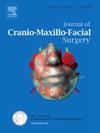Application of task-autonomous dental robot for lateral window preparation in the maxillary sinus
IF 2.1
2区 医学
Q2 DENTISTRY, ORAL SURGERY & MEDICINE
引用次数: 0
Abstract
The study aimed to investigate the feasibility and accuracy of task-autonomous dental robots for lateral window preparation in the maxillary sinus, as well as to propose 3 indexes for assessing the accuracy of lateral window preparation.
Twenty 1:1 resin maxilla models were fabricated, all of which underwent preoperative CBCT and utilized the data to design 40 lateral windows. A task-autonomous dental robot was used to autonomously perform the preparation of 20 lateral windows according to the design under supervision, while another 20 lateral windows were prepared with freehand as control. Morphology of the postoperative lateral windows was obtained using oral scans for accuracy analysis. Three indexes (center displacement, area overlap ratio, and area difference) were used to evaluate the accuracy of lateral window preparation in 2 groups. The Shapiro-Wilk test was used to assess the normal distribution of all variables (α = 0.05), and the values of the 3 indexes were evaluated in both groups using 2 independent samples t-tests or rank sum tests, respectively.
The lateral window prepared by the robot group had an area overlap ratio of 0.906 ± 0.038, an area difference of 1.65 (0.51, 2.58) mm2, and a center displacement of 0.19 ± 0.09 mm, which was better than those in the freehand group (0.730 ± 0.105, 4.86 (1.22, 6.77) mm2, and 1.19 ± 0.60 mm). The difference between the 2 groups was statistically significant (P < 0.05).
The task-autonomous dental robot for maxillary sinus lateral window preparation proposed in this study is feasible, and the indexes used to evaluate the accuracy of window preparation are available. The task-autonomous dental robot prepared the lateral window with higher accuracy than the freehand preparation.
任务自主式牙科机器人在上颌窦侧窗预备中的应用。
本研究旨在探讨任务自主式牙科机器人用于上颌窦侧窗制备的可行性和准确性,并提出评估侧窗制备准确性的3个指标。制作20个1:1树脂上颌模型,术前行CBCT检查,利用数据设计40个侧窗。使用任务自主式牙科机器人,在监督下按照设计自主制备20个侧窗,并以徒手为控制制备另外20个侧窗。通过口腔扫描获得术后侧窗的形态学以进行准确性分析。采用中心位移、面积重叠率、面积差3个指标评价两组侧窗预备术的准确性。采用Shapiro-Wilk检验检验各变量的正态分布(α = 0.05),两组3个指标分别采用2独立样本t检验或秩和检验。机器人组制备的侧窗面积重叠比为0.906±0.038,面积差为1.65 (0.51,2.58)mm2,中心位移为0.19±0.09 mm,优于徒手组(0.730±0.105,4.86 (1.22,6.77)mm2, 1.19±0.60 mm)。两组间差异有统计学意义(P
本文章由计算机程序翻译,如有差异,请以英文原文为准。
求助全文
约1分钟内获得全文
求助全文
来源期刊
CiteScore
5.20
自引率
22.60%
发文量
117
审稿时长
70 days
期刊介绍:
The Journal of Cranio-Maxillofacial Surgery publishes articles covering all aspects of surgery of the head, face and jaw. Specific topics covered recently have included:
• Distraction osteogenesis
• Synthetic bone substitutes
• Fibroblast growth factors
• Fetal wound healing
• Skull base surgery
• Computer-assisted surgery
• Vascularized bone grafts

 求助内容:
求助内容: 应助结果提醒方式:
应助结果提醒方式:


